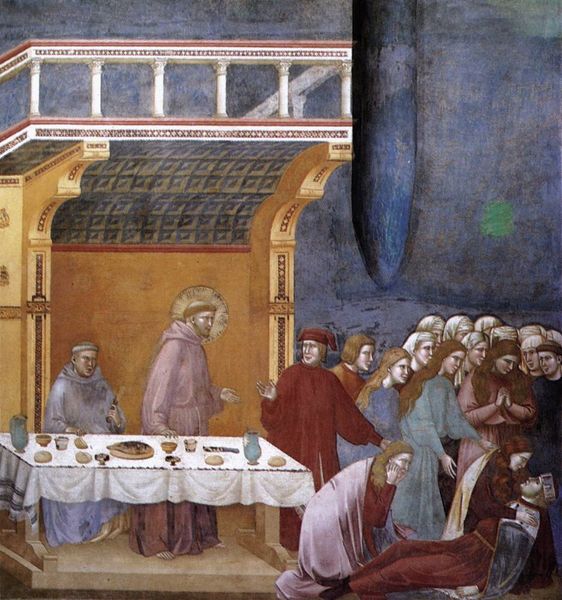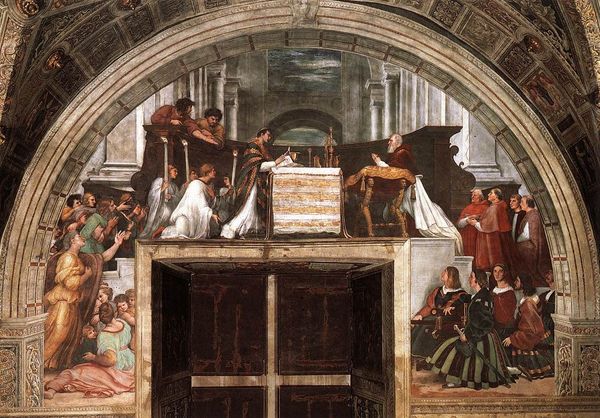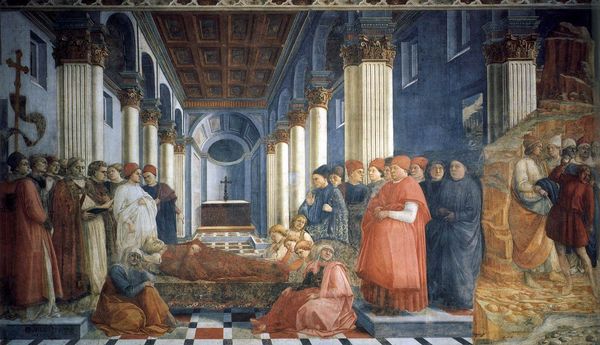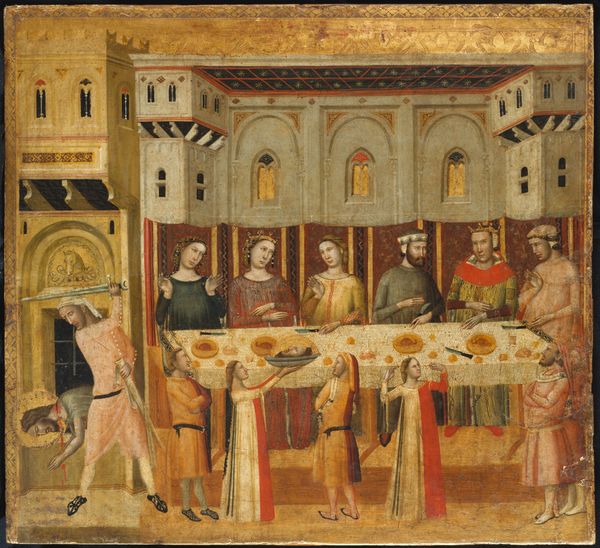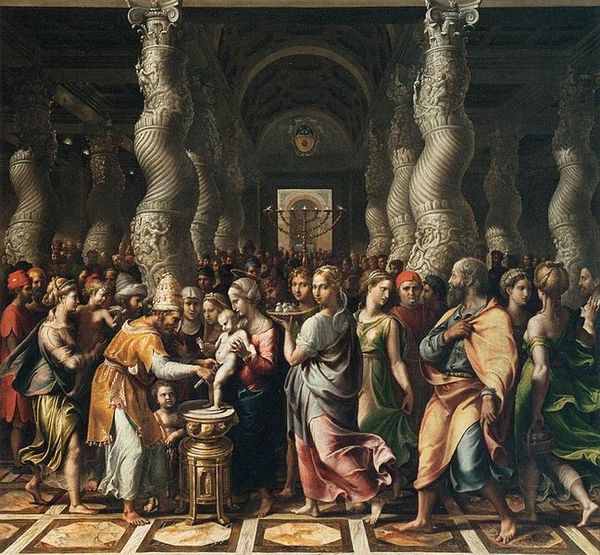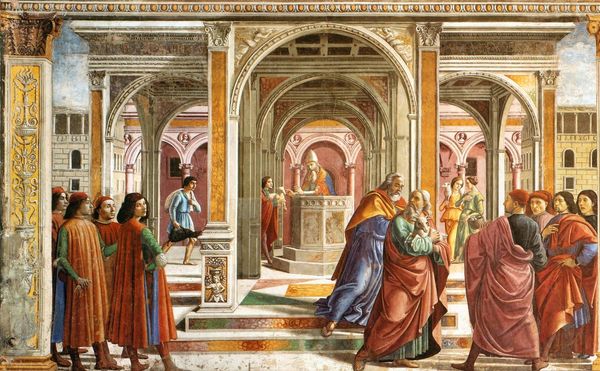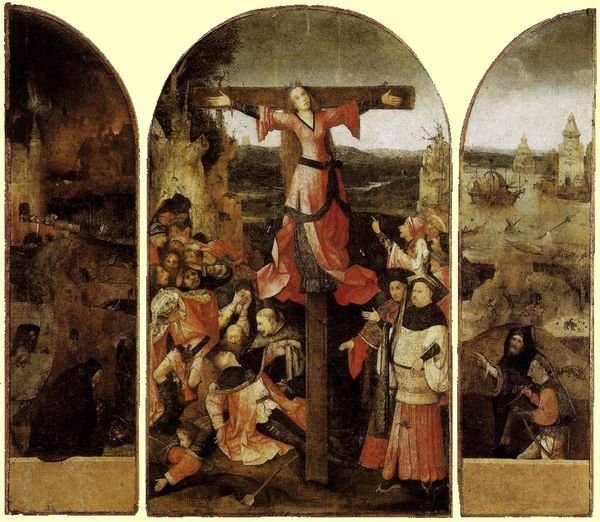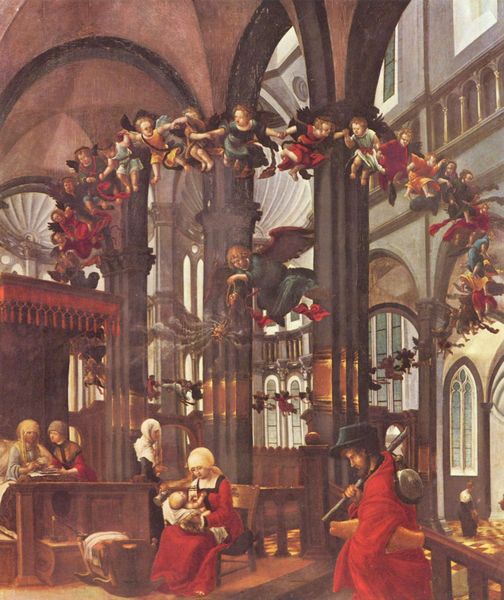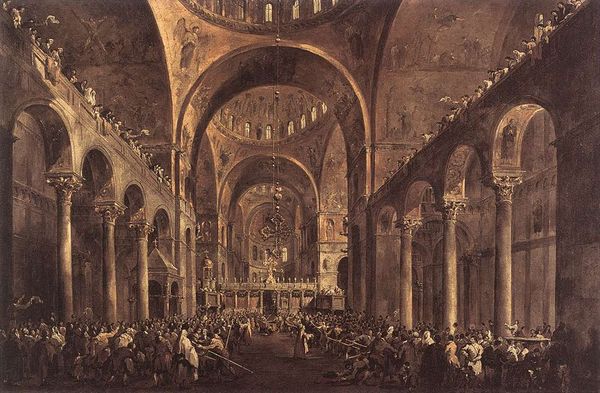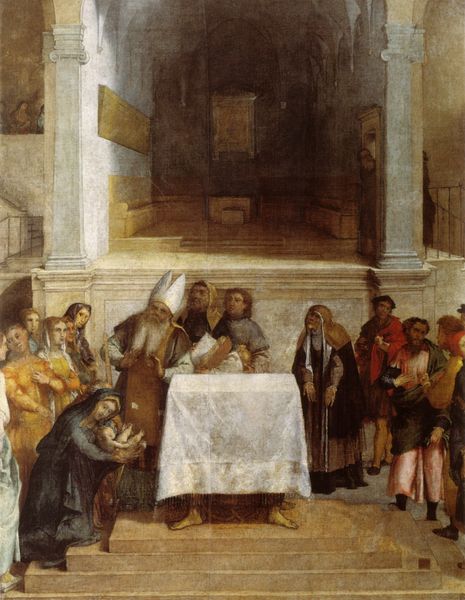
tempera, painting, oil-paint
#
narrative-art
#
tempera
#
painting
#
oil-paint
#
perspective
#
figuration
#
history-painting
#
italian-renaissance
#
early-renaissance
Dimensions: 142 x 83 cm
Copyright: Public domain
Curator: This is "The Story of Nastagio degli Onesti," painted by Sandro Botticelli around 1483, rendered in tempera and oil paint. It’s a fascinating piece of narrative art. Editor: Intriguing! The color palette is so subdued, almost melancholic despite the festive scene. The severe architecture dominates; the human figures seem secondary to the geometric framework. Curator: Absolutely. Let’s delve into the compositional structure. Note how Botticelli employs linear perspective to guide our gaze into the distance, creating depth and simultaneously dividing the scenes within the painting. This manipulation directs our reading of the narrative, a core Renaissance innovation. Editor: The figures are arranged almost like stage props, and this lends a certain theatricality, though with somewhat stilted emotional range. We need to ask what social purpose such theatrical, performative narrative art may have been intended to fulfill in the 15th Century Florentine society. Curator: In historical terms, the painting was commissioned by the Pucci family for the marriage of Giannozzo Pucci and Lucrezia Bini, these panels served a clear political and dynastic role. Art becomes a tool for solidifying social structures, but looking closer at the brushstrokes we see the delicate rendering of fabric, a deliberate aesthetic choice emphasizing texture, the layering of paint creating luminous effects. The contrast makes it seem like the architecture exists only to set-off the story being depicted. Editor: So the visual hierarchy—the architectural structures seemingly more visually weighty than the human story— mirrors a real world societal hierarchy with powerful architecture dominating even human drama. Curator: Precisely. What appear to be leisurely scenarios is, in fact, deeply enmeshed with Renaissance societal mores regarding courtly love, familial honor and the economics of marriage. I can see these ideas embedded within each brushstroke as it shapes the scenes. Editor: Reflecting on our chat, it strikes me how easily the reading of visual forms interlocks with historical context. Seeing the society allows seeing into the composition’s deep intent.
Comments
No comments
Be the first to comment and join the conversation on the ultimate creative platform.

